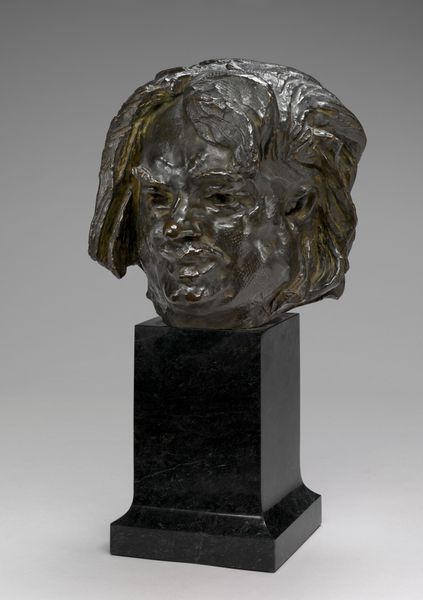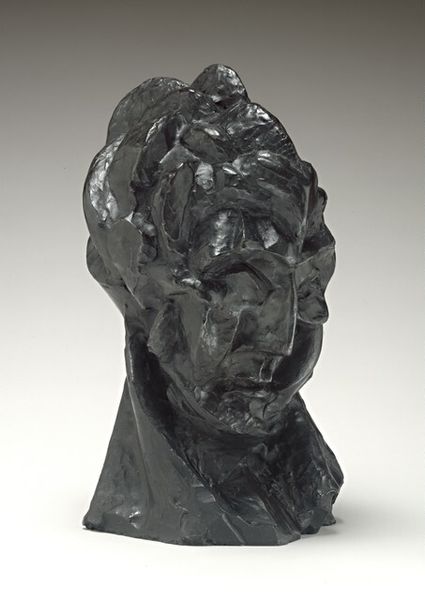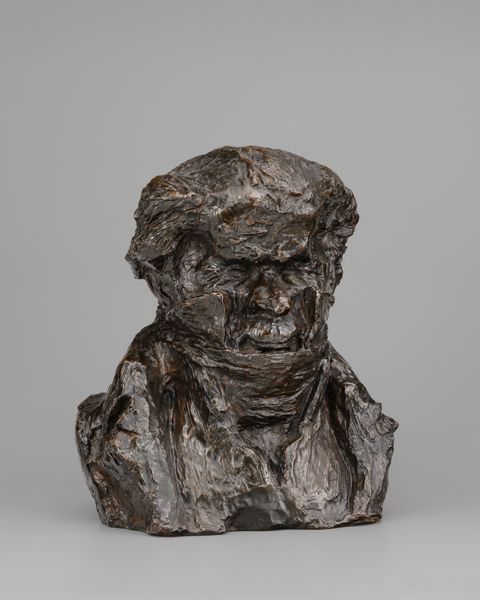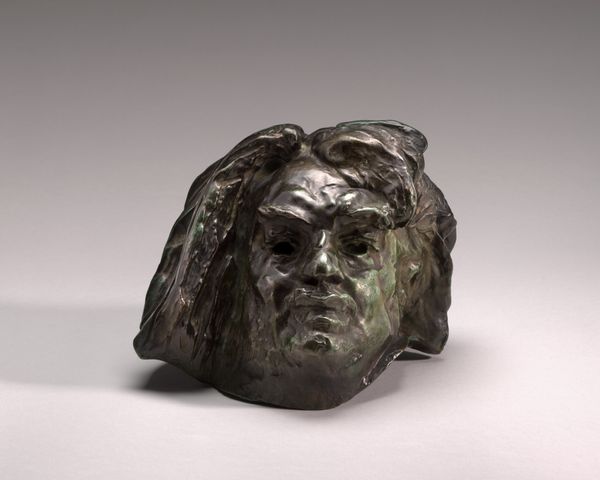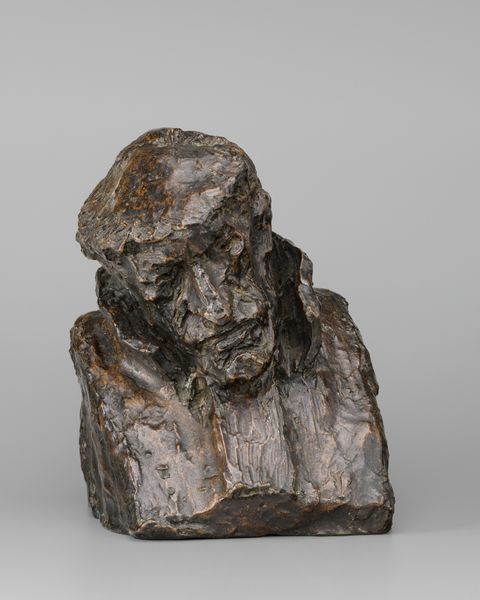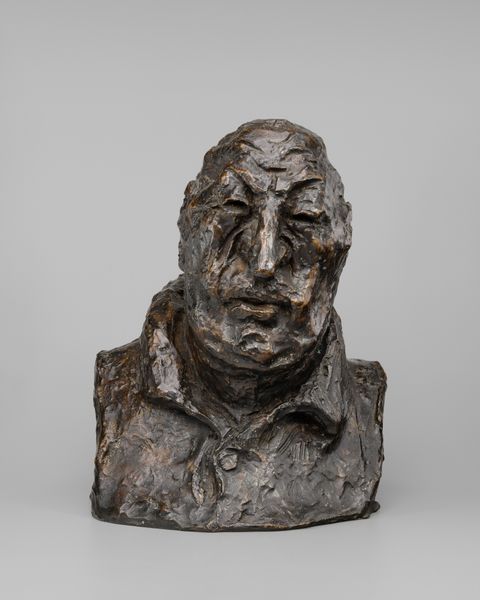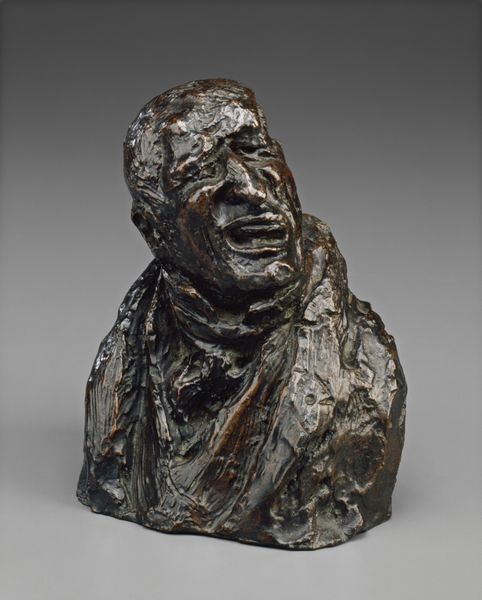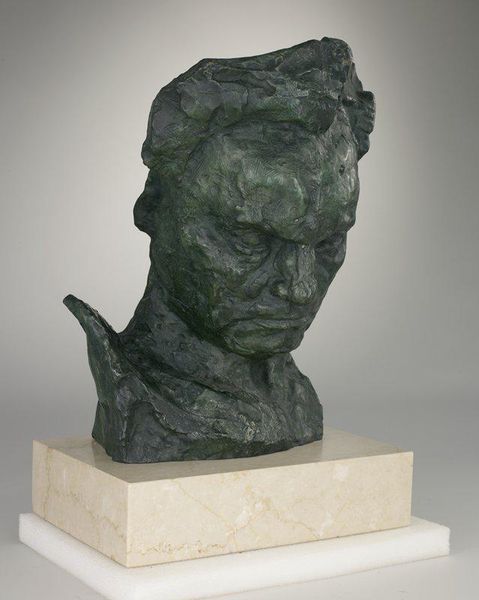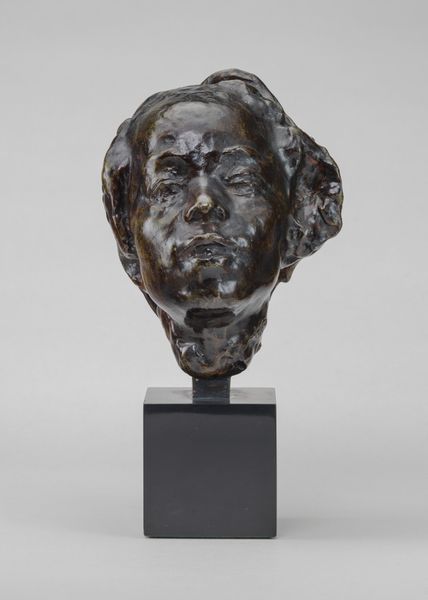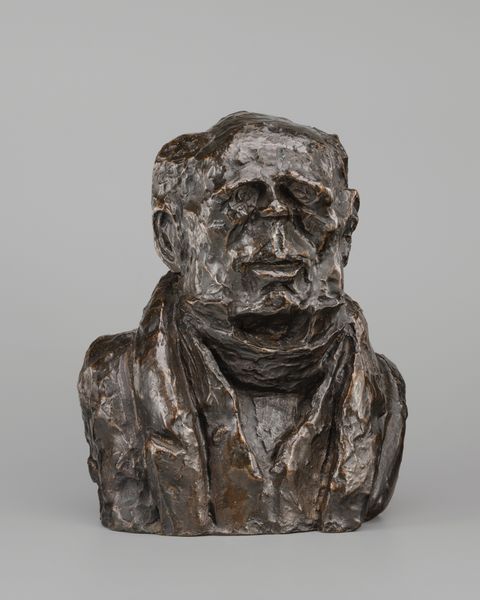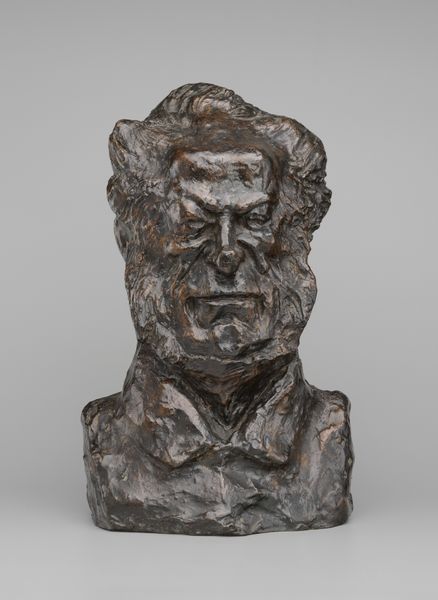
Dimensions: with base: 17 1/2 × 12 1/4 × 9 1/4 in., 26 lb. (44.5 × 31.1 × 23.5 cm, 11.8 kg) without base, wt. confirmed: 12 in., 20 lb. (30.5 cm, 9.1 kg)
Copyright: Public Domain
Editor: This is Auguste Rodin's "Head of Balzac," a bronze sculpture made between 1887 and 1980. The texture seems so raw and unfinished. How should we understand the purpose and the making of the art piece, given its period? Curator: That rawness, as you call it, is key. Think about Rodin's project. He was deeply involved in redefining public monuments. The Balzac commission, which this is a study for, was initially rejected. What does that rejection say about the artistic establishment's expectations at the time? Editor: That it challenged their traditional sensibilities. This wasn't the clean, heroic sculpture they were used to? Curator: Exactly. The Balzac commission aimed to celebrate a great writer, but Rodin did not seek a pure likeness. Instead, his goal was to depict Balzac's inner life and creative spirit. It shows Rodin grappling with representing genius. The politics of imagery played a central role in art’s function. Editor: So the rough texture and unconventional style are part of a statement? How much was Rodin commenting on societal expectations of artists? Curator: A great deal. He challenged the norms, sparking public debate about art's role in representing cultural icons. He wasn't merely crafting a statue, he was provoking a conversation. The way we display this piece also speaks to our present moment and a more modern expectation for art in a gallery. Editor: So the sculpture's journey – from commission, to rejection, to eventual acceptance – really underscores how art and its reception are shaped by cultural forces? Curator: Precisely. And how even a seemingly solitary artwork exists within a web of social and institutional relations. Editor: That reframes my initial impression entirely. It's fascinating how understanding the historical context changes how you see the sculpture. Thanks!
Comments
No comments
Be the first to comment and join the conversation on the ultimate creative platform.
